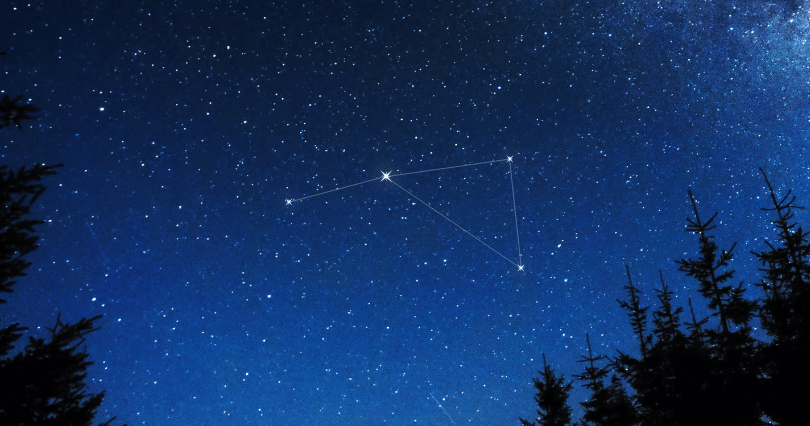Gazing up into the night sky, we cannot help but feel humbled by the infinite expanse of the universe. Among the myriad of dazzling stars, one lesser-known constellation has piqued the interest of astronomers and stargazers alike: Antlia. This faint, inconspicuous constellation may be overlooked by casual observers, but it holds a special place among the stars. Join us as we delve into the secrets of Constellation Antlia, its history, unique features, and the fascinating celestial objects it contains. Prepare to embark on a celestial journey that will unveil the wonders of this enigmatic constellation.
1. Exploring the Depths of Antlia: A Constellation with Remarkable History
The constellation Antlia, also known as the Air Pump, is located in the southern hemisphere and was first introduced by the French astronomer Abbé Nicolas Louis de Lacaille in 1756. It is named after the air pump device invented by English physicist Robert Boyle.
Antlia is a small and faint constellation, but it has an interesting history. It was originally named Antlia Pneumatica, but this longer name was later shortened to simply Antlia. With the help of a telescope, you can observe an array of galaxies, clusters and nebulae in Antlia, including the spiral galaxy NGC 2997 and the Antlia Dwarf Galaxy. Exploring the depths of Antlia can reveal many curious and fascinating astronomical wonders.
2. Uncovering the Legends of Antlia: An Astonishing Interstellar Tale
Many ancient societies, including the Babylonians and Greeks, created myths and legends about the constellations in order to explain their place in the heavens. However, Antlia was not one of the constellations recognized by the ancient astronomers. Nevertheless, the constellation has an astonishing interstellar tale to tell.
Antlia is a fascinating constellation due to its origin story, which is tied to the history of the air pump. Robert Boyle used his invention to prove that air needs space and that a vacuum can exist. His work inspired Lacaille to create the constellation in recognition of Boyle’s contribution to science. Although it was named after a scientific invention, the constellation has taken on a life of its own, inspiring many to observe its celestial beauty and explore its secrets.
3. The Celestial Beauty of Antlia: A Glimpse of its Splendor in the Night Sky
Although Antlia is not one of the most prominent constellations in the night sky, it is still a beautiful sight to behold. Due to its faintness, it can be challenging to spot without binoculars or a telescope. However, once you do locate it, you can enjoy its celestial splendor.
Antlia has a unique shape that resembles an upside-down chalice, and it is composed of a cluster of faint stars. This makes it a perfect binocular target for stargazers on dark, clear nights. The Antlia Dwarf Galaxy is also a remarkable celestial wonder that is worth observing with a telescope. Its stunning spiral arms and bright central bulge are a true celestial beauty.
4. How to Locate Antlia in the Heavens: A Stargazer’s Guide
Antlia may not be the most prominent constellation in the night sky, but locating it is still a fun and rewarding challenge. It is located in the southern hemisphere, and if you are located north of the equator, you may need to travel to a more southern location to be able to observe it.
When looking for Antlia, it is helpful to use two reference stars: Achernar and Fomalhaut. Achernar is the brightest star in the constellation of Eridanus, and Fomalhaut is the brightest star in the constellation of Piscis Austrinus. Just above Fomalhaut, you should be able to spot the faint shape of Antlia with the help of binoculars or a telescope. With a little patience and persistence, you can locate this fascinating and beautiful constellation in the night sky.
As we conclude our exploration of the constellation Antlia, we can’t help but marvel at the vastness and complexity of our universe. From its obscure beginnings as a humble air pump to a collection of stunning cosmic objects, Antlia continues to capture the imagination of astronomers and stargazers across the world. Whether you’re an amateur astronomer, space enthusiast or simply someone who appreciates the beauty of the night sky, we hope that our brief journey through Antlia has inspired you to look up and appreciate the wondrous celestial sights that surround us. Who knows? Perhaps the next time you gaze up at the stars, you’ll spot a star cluster, nebula or even a galaxy from the fascinating constellation of Antlia.
Antlia Constellation: A Look at One of the Smallest and Least Known Constellations
Antlia, also known as the Air Pump, is a small and rather inconspicuous southern constellation that was first introduced by French astronomer Nicolas Louis de Lacaille in the 18th century. The name “Antlia” means “pump” in Latin, an allusion to the air pump that Lacaille used to create a vacuum and study the behavior of gases.
Despite its small size and relative obscurity, Antlia contains a number of interesting objects that can be observed with telescopes from Earth or explored by spacecraft. Here are some key facts about this constellation and its contents.
Location and Visibility
Antlia is located in the southern sky and can be seen from latitudes as far north as the tropics but is best viewed from the Southern Hemisphere. It lies between the constellations Hydra to the west, Pyxis to the south, Vela to the east, and Centaurus to the north. Antlia is quite small, covering an area of only about 239 square degrees.
Antlia has no stars brighter than magnitude 3.0, which means that it can be challenging to spot with the naked eye under most conditions. However, it is more visible from the Southern Hemisphere, where it can be seen in clear, dark skies. Its most prominent feature is its Alpha Antliae, a yellow-white star with a magnitude of 4.25.
Features and Objects in Antlia
Antlia is not particularly rich in stars, but it contains several notable objects that can be observed by amateur and professional astronomers alike.
Alpha Antliae is an aging K-class giant star located about 360 light-years away. It has a diameter of about 38 times that of the sun and is almost seven times as massive. The star is known to have a small companion that orbits it every 255 days.
Located near the border with Hydra, NGC 2997 is a large spiral galaxy that can be observed from Earth. It has a bright and elongated core and a large number of star-forming regions in its periphery. NGC 2997 is approximately 25 million light-years away and has a magnitude of about 9.9, making it a suitable target for telescopes with apertures of at least 8 inches.
Another notable feature in Antlia is the Antlia Dwaf Galaxy or HIPASS J1004-29. It is a particularly small galaxy with a magnitude of about 16.6, located about 4 million light-years away from Earth. It is classified as a dwarf spheroidal galaxy and is believed to be a satellite of the Milky Way.
Other objects in Antlia include the globular cluster NGC 2999, the planetary nebula NGC 3132, and the Snowflake Cluster, a young open cluster that contains about 20 stars.
Conclusion
Despite being one of the smallest and least known constellations, Antlia has a number of interesting features and objects for astronomers to explore. Its lack of bright stars makes it challenging to spot from most locations on Earth, but it is more visible from the Southern Hemisphere. With its spiral galaxy, dwarf galaxy, globular cluster, planetary nebula, and open cluster, Antlia has plenty to offer skywatchers who are interested in the mysteries of the universe.





















